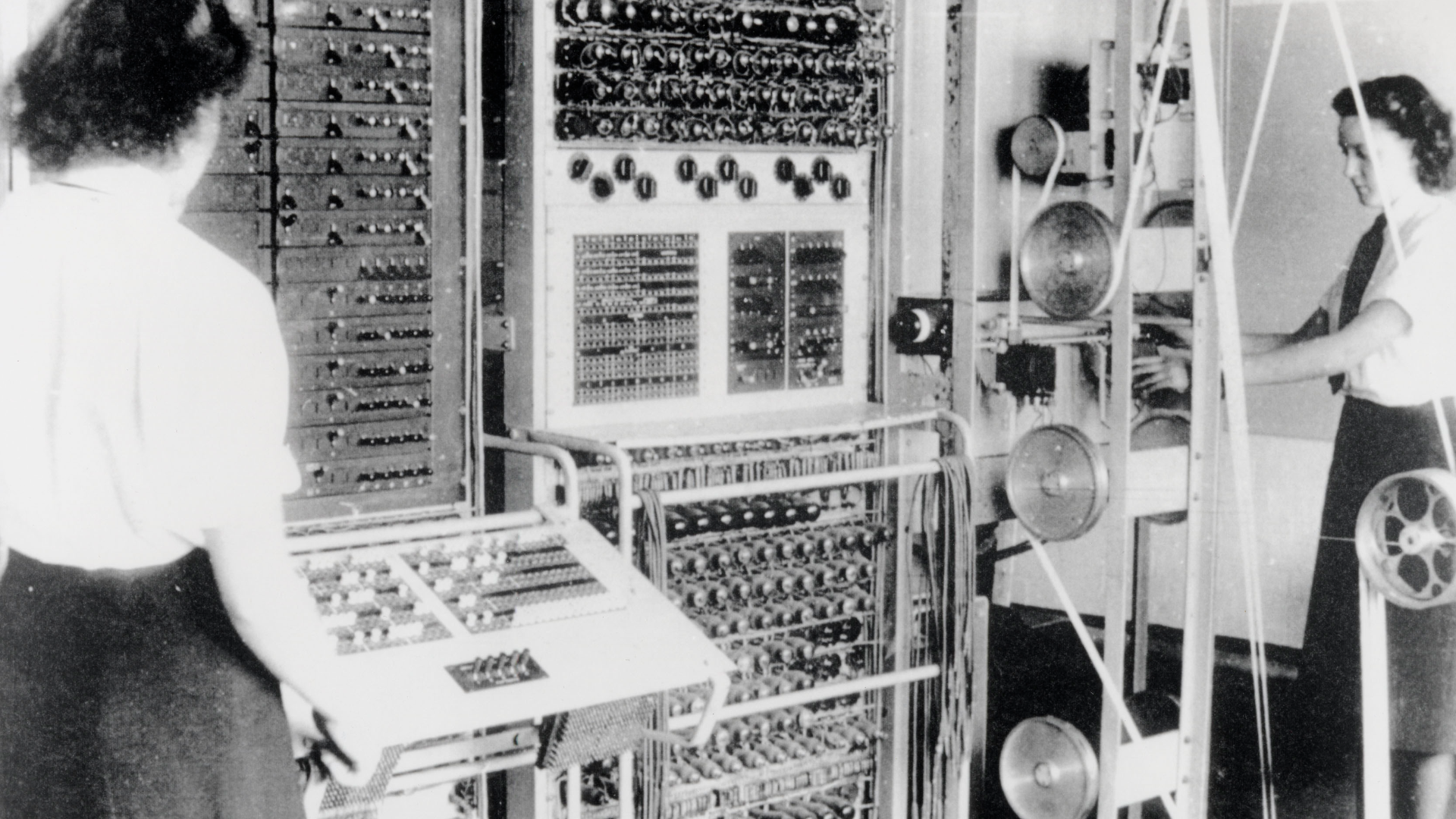Your PC might be cool, but it'll never be Colossus—an 80-year-old beast as tall as a person that could 'read Hitler's mind'
Code breakers.

The United Kingdom's Government Communications Headquarters (GCHQ) has unveiled further details about Colossus, often referred to as "the first ever digital computer", for its 80th birthday. A machine which—as this obituary to an MI5 chief scientific officer who helped rebuild it states—could "read Hitler's mind".
OK—we didn't have psychic powers in the 1940s, but Colossus was an absolutely instrumental part of World War 2, and a landmark piece of tech in general. So instrumental, in fact, it was kept a secret from the public for 56 years—and the originals were ordered destroyed by Winston Churchill after the war. Even then, information was relatively limited until now—we've got full pictures of this beast, as well as some fascinating documents.
It should be noted that Colossus wasn't just one computer, but an array of them. Designed to help decode teleprinter messages, the Colossus was considered to be "the first [computer] that was digital, programmable, and electronic", though it wasn't able to store programs—that had to be done via physical switches and plugs. So no, you probably can't run Doom on it.
Instead, encrypted messages were fed into the Colossus via paper tape, which it could read at "5000 characters per second". In terms of the computer's specs, rings of neon gas valves that could store a whopping 1 bit of information were "arranged in precise numbers to mimic the wheels of the Lorenz encryption machine … once the pattern of ones and zeros on the wheels were known, these could be stored in the thyratron rings and used to find the correct settings for several messages." SSDs, eat your heart out.
What's most fascinating to me are the logic gates. In case you're not aware, computers use logic gates for a lot of their more complicated functions. These gates can output a zero or a one (think binary code), and are chained together to perform more complex tasks.
The Colossus had these, but they weren't built out of electronic circuits—they were built out of vacuum tubes, which allowed a current to pass from a cathode to an anode in a vacuum: 2,500 of them, to be precise. Their use was actually widespread for a while, in radio, television, radar, and sound recording.
The machine itself was also instrumental in providing confirmation that D-Day was still underway, where the allies famously misled German intelligence. As the GCHQ writes:
"While planning for the D-Day landings was well underway by the time COLOSSUS was introduced, it was one of the machines that helped produce the intelligence that Hitler had been successfully convinced that the Allies would be launching the invasion from Pas De Calais and not Normandy."
Keep up to date with the most important stories and the best deals, as picked by the PC Gamer team.
So when you're sat there, tinkering with graphics settings to squeeze out an extra frame or two from your high-end rig: the grandfather of programmable digital computers was a two-meter tall beast, programmed with switches and neon gas and fed instructions with paper.

Harvey's history with games started when he first begged his parents for a World of Warcraft subscription aged 12, though he's since been cursed with Final Fantasy 14-brain and a huge crush on G'raha Tia. He made his start as a freelancer, writing for websites like Techradar, The Escapist, Dicebreaker, The Gamer, Into the Spine—and of course, PC Gamer. He'll sink his teeth into anything that looks interesting, though he has a soft spot for RPGs, soulslikes, roguelikes, deckbuilders, MMOs, and weird indie titles. He also plays a shelf load of TTRPGs in his offline time. Don't ask him what his favourite system is, he has too many.

